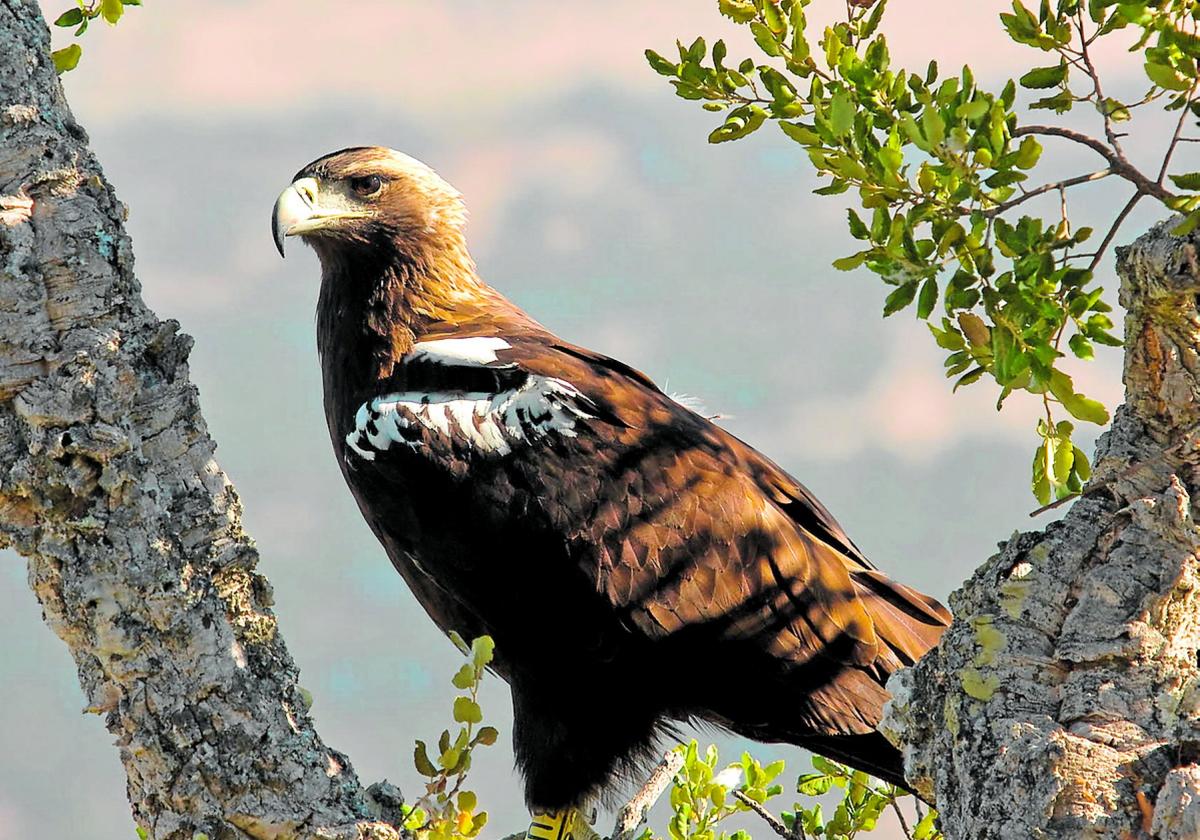Imperial eagle success in Andalucía, now with double the population and 164 breeding pairs
The Junta's recovery programme for this majestic bird of prey has led to the expansion of its habitat to 18 new sites in the region - although it still faces multiple threats
Andalucía's most vulnerable fauna is progressing favourably in terms of its most emblematic species of predators and raptors. The spectacular recovery experienced in recent years by the Iberian lynx is now joined, albeit at a slower pace, by that of the Iberian imperial eagle, another treasured icon of Andalucía's extraordinary biodiversity.
This positive trend is directly influenced by the conservation programmes promoted by the regional government over the last few years through its regional ministry of sustainability and environment. The latest census of the imperial eagle by the regional ministry reflects a notable recovery for this bird of prey, with 164 breeding pairs now dispersed throughout the region.
This 2024 census marks an all-time high for this eagle's regional population, which has doubled in the last decade and can now count up to 18 more places that are inhabited by this species, an increase of almost 11% on 2023 data. Moreover, losses have decreased significantly and only 2 long-standing pairs have disappeared.
Diego García, coordinator of the conservation and recovery plan for this raptor bird, told SUR that "one of the keys to this favourable progress is its exceptional expansion and the large number of new territories being reconquered by new pairs, which translates into greater viability of its population."
The population in the Doñana national park is stagnating, but rocketing in the Sierra Morena and expanding in the Sierras Béticas, Cadiz and Huelva.
In this regard, Diego García highlighted "the addition of new territories in Cadiz and Seville, with four more in each of these provinces, and seven in Cordoba." Numbers have grown primarily in Sierra Morena, where there are more than 100 pairs, while in Cadiz there are now 13 breeding grounds and 11 in the Sierras Béticas, both in Jaen and Granada.
In the Sierra de Huelva mountain range, where some breeding attempts had been sighted in recent years, there are now two pairs as of 2024 and, for the first time, one of them has managed to raise a chick.
These positive results contrast with the stagnation recorded in Doñana, where the population has not exceeded eight breeding pairs in recent years.
These results confirm the positive trend shown by the species since 1989, with a year-on-year increase of almost 6%. In the last ten years, the imperial eagle population has exceeded the limit of 100 pairs, which is considered the minimum population size to achieve a favourable status for conservation purposes, according to the EU's Birds Directive and Spain's national strategy for the conservation (ENC) of the species.
Breeding is up too...
Last year, the census recorded the birth of 177 chicks, surpassing the previous record of 166 in 2021. Breeding for the Iberian imperial eagle is very delicate and complex, with an average clutch of three or four eggs being laid and then only one or two usually fledge.
Garcçia made special mention of the increase in breeding success with the implementation of supplementary feeding techniques in the unproductive areas, as well as the rescue of chicks at risk of death.
Deliberate poisoning, power lines and shootings are the main threats.
The progress made in the conservation of the Iberian imperial eagle is offset by the multiple threats facing this spectacular bird of prey with a wingspan wider than two metres, and it remains in danger of extinction despite its positive evolution. The main threats include electrocution caused by power lines while the bird perches on them, ingestion of poisoned bait and, more recently, being shot. The regional environment ministry underlines the significant reduction in unnatural causes of death thanks to the protection measures in place, including the repair and modification of dangerous power lines, the fight against the illegal use of poisoned bait and the minimisation of disturbance of nesting areas, which are located in large trees where these birds typically settle for breeding. More than half of the deaths are caused by electrocution, 20% by poison and, most worryingly, 20% also by gunwielding individuals. The rest are due to natural causes, so the regional ministry will continue to promote awareness campaigns to prevent the loss of specimens for these reasons. The recovery team also values the increase in the number of wild rabbits, the main prey and food source for this bird.



Comentar es una ventaja exclusiva para registrados
¿Ya eres registrado?
Inicia sesiónNecesitas ser suscriptor para poder votar.